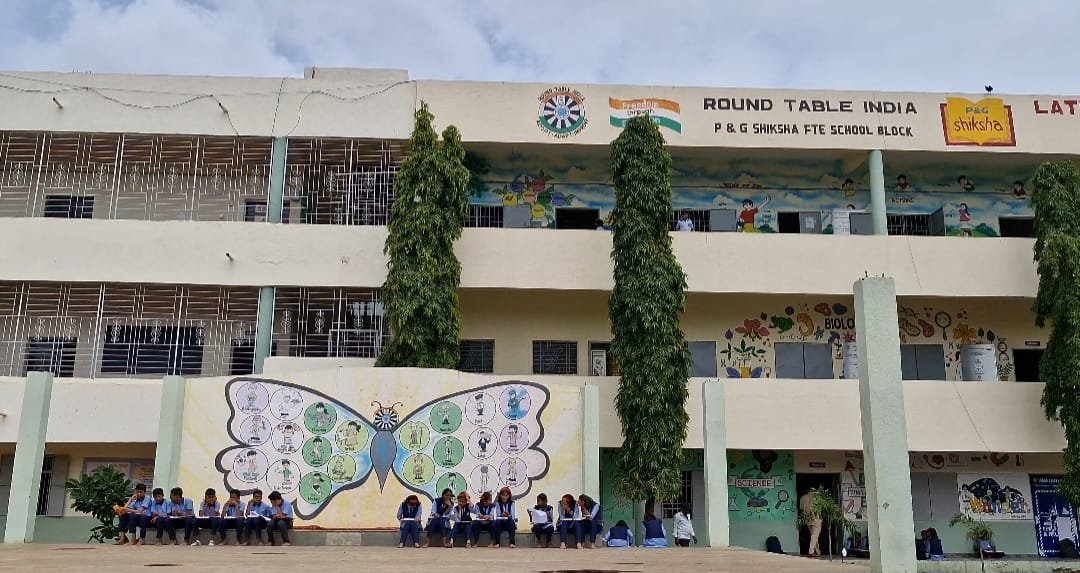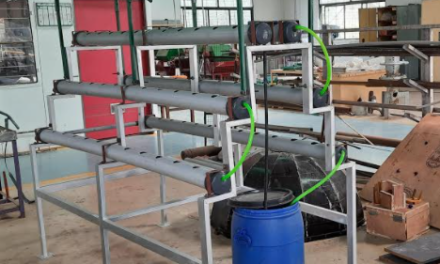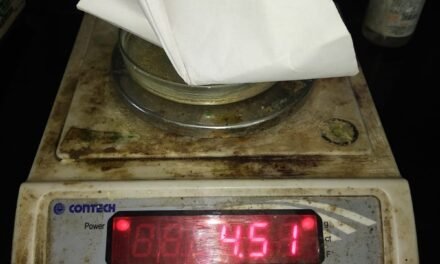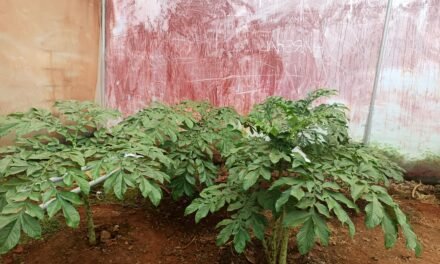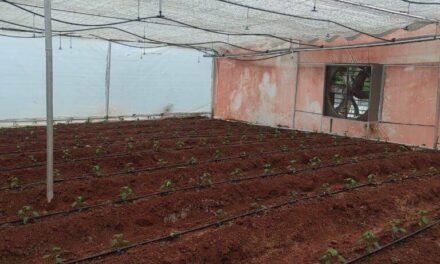Part A: Energy Auditing at Vigyan Ashram
Introduction
Vigyan Ashram, renowned for its innovative educational programs and dedication to sustainable
practices, was the focus of our comprehensive energy audit. Over four days, we aimed to identify
areas for energy optimization and suggest practical solutions.
Analysis
My analysis began with identifying the highest energy-consuming areas and noting any anomalies or
inefficiencies. The detailed data collected allowed us to pinpoint specific areas where energy usage
could be optimized, such as:
o Lighting: Several areas used outdated lighting systems that consumed high amounts of energy.
o Heating: Inefficient heating systems were identified, with potential for significant energy
savings through upgrades or maintenance.
o Machinery: Certain machinery was found to be operating inefficiently, either due to age or
lack of maintenance.
Part B: Energy Audit at Mukhai School
Introduction
Following the successful audit at Vigyan Ashram, we conducted an energy audit at Mukhai School. The
rural setting of the school presented a different set of challenges and opportunities for energy
optimization.
Initial Meeting and Walkthrough
My first day involved meeting with the school administration to understand their energy consumption
patterns. I conducted a preliminary walkthrough to identify key areas of focus for our audit, such as
classrooms, the kitchen, and administrative offices.
Detailed Data Collection
Similar to our approach at Vigyan Ashram, the second day was dedicated to data collection. We
measured the energy usage of various appliances, lighting systems, and other electrical equipment.
The school’s reliance on traditional lighting and older appliances indicated significant room for
improvement.
Analysis
The analysis of the collected data revealed several areas with potential for energy savings:
o Lighting: The use of traditional lighting systems contributed to high energy consumption.
o Appliances: Many appliances were outdated and inefficient, consuming more energy than
necessary.
o Electrical Equipment: Inefficiencies were noted in the usage of electrical equipment in
administrative offices and classrooms.
Day 1: Learned Concepts Related to Energy Auditing
- Day 1:
- Spent the day studying and understanding the fundamental concepts related to energy auditing.
- Reviewed academic papers, technical documents, and other resources to build a solid foundation on how to conduct an energy audit effectively.
Day 2: Learned How to Use Energy Auditing Tools
- Day 2:
- Focused on learning how to use the various tools required for energy auditing, such as power analyzers, cameras, and lux meters.
- Practiced with these tools to ensure accurate data collection during the audit.
Day 3: Initial Setup and Walkthrough at Vigyan Ashram
- Day 3:
- Arrived at Vigyan Ashram and set up the auditing equipment.
- Met with the staff to understand their energy usage patterns, which helped in pinpointing key areas for the audit.
- Conducted an initial walkthrough of the facility, identifying potential areas for energy optimization, particularly in lighting, heating, and machinery usage.
Day 4: Detailed Data Collection – Part 1
- Day 4:
- Began detailed data collection using advanced tools.
- Measured energy consumption across various devices and sections of the ashram.
- Recorded data meticulously for later analysis.
Day 5: Detailed Data Collection – Part 2
- Day 5:
- Continued the data collection process, ensuring all significant energy-consuming areas were covered.
- Collected additional data to complement the findings from the previous day.
Day 6: Initial Analysis of Data
- Day 6:
- Started the analysis by identifying the highest energy-consuming areas.
- Noted any anomalies or inefficiencies observed during the data collection phase.
- Highlighted specific areas where energy usage could be optimized.
Day 7: Detailed Analysis and Interpretation of Results
- Day 7:
- Conducted a detailed analysis of the data collected, focusing on lighting, heating, and machinery usage.
- Identified outdated lighting systems, inefficient heating systems, and machinery operating inefficiently due to age or lack of maintenance.
- Compiled findings into a comprehensive report.
Day 8: Drafting Recommendations
- Day 8:
- Based on the analysis, drafted recommendations for energy optimization at Vigyan Ashram.
- Suggested upgrading lighting systems to energy-efficient LED lights, regular maintenance, and potential upgrades to heating systems and machinery.
Day 9: Preparing the Final Report
- Day 9:
- Drafted the final report, including all sections such as the introduction, methodology, detailed findings, and recommendations.
- Included diagrams, charts, and other visual aids to support the findings.
- Ensured the report was well-organized, clear, and professional.
Day 10: Uploading the Report to Blog
- Day 10:
- Converted the report into the desired formats (e.g., PDF, Word) and checked for file integrity and readability.
- Uploaded the final report to the blog, ensuring all content was correctly displayed.
VIGYAN ASHRAM
| Equipment | Rating | Usage | Energy Consumed per day |
| Food Lab | |||
| Refregirator | 30 W | 24 hours | 0.726 |
| Chest Freeze | 290 W | 24 hours | 6 |
| Induction | 1200 W | 2 min | 40 W, 0.04 KW |
| Mixture | 750 W | 2 min | 25 W, 0.025 KW |
| Refrigirator | 27 W | 24 hours | 0.65 kw |
| Oven | |||
| Light | 20*2 W | 5 hours | 200 W |
| Fan | 60*2 W | 5 hours | 600 W |
| Kitchen | |||
| Chest Frezer | 260 W | 24 hours | 6 KW |
| Roti Maker | 3280 W | 20 min | 1093 W |
| Solar DC Refrigerator | – | – | – |
| Lights | 20*6 | 2 hours | 240 W |
| Fans | 60*4 | 4 hours | 960 W |
| Account Section | |||
| Printers | 2*20 W | 40 min | 26 W |
| PC | 3*200W | 8 hours | 4.8KW |
| Light | 20*2 W | 3 hours | 120 W |
| Fan | 60*2 W | 4 hours | 480 W |
| DBRT | |||
| Printers | 2*20 W | 20 min | 13 W |
| PC | 2*200W | 4 hours | 1.6 KW |
| Light | 20 W | 6 hours | 120 W |
| Fan | 60 W | 6 hours | 360 W |
| Polyhouse | |||
| Exhaust Fan | 2*750W | 8 hours | 12 KW |
| Ventury meter | 450 W | 1 hour | 450W |
| Soil Lab | |||
| Refrigerator | 24 hours | 0.72 KW | |
| Sterilizer | 100 W | 20 hours | 2 KW |
| Light | 20*4 W | 4 hours | 320 W |
| Fan | 60 | 6 hours | 360 W |
| AC | 1000 | 8 hours | 8000 W |
| EDP | |||
| Laptops | 4*200 W | 4 hours | 3.2 KW |
| Light | 20*2 | 4 hours | 160 W |
| Fan | 60*2 | 3 hours | 360 W |
| Workshop | |||
| Power Hacksaw | 750 W | 10 min | 41 W |
| Milling Machine | 750 W | 5 min | 20 W |
| Lathe Machine | 1100 W | 5 min | 91 W |
| Grinder | 370 W | 20 min | 123 W |
| Cutting Machine | 1500 W | 20 min | 500 W |
| Drill Machine | 1500 W | 20 min | 500 W |
| Induction Motor | 3KW | 10 min | 500 W |
| Oven | 4KW | 20 min | 1333 W |
| Powder Coating | 750 W | 1 hours | 750 W |
| Exhaust Fan | 750 W | 4 hours | 3 KW |
| Light | 20*4 | 3 hours | 240 W |
| Fab Lab | |||
| 3D Printers | 500 W & 350W | 8 hours | 4000 W |
| Vinyl Machine | 900 W | 5 min | 75 W |
| Lazer Cutter | 500 W | 1 hour | 500 W |
| CNC Wood Router | 2500 W | 10 min | 416 W |
| Zig Saw | 85 W | 5 min | 7 W |
| PCB Milling Machine | 1000 W | 5 min | 83 W |
| Light | 10 * 4 W | 10 hours | 400 W |
| Fan | 40*2 W | 6 hours | 480 W |
| Energy and Conservation Lab | |||
| Battery Charging | – | – | 50 W |
| Cooler | 250 W | 2 hours | 500 W |
| PC | 200 W | 2 hours | 400 W |
| Soldering Machine | 100 W | 10 min | 17 W |
| Light | 20 W | 4 hours | 80 W |
| Fan | 60 W | 2 hours | 120 w |
| DIC Lab | |||
| PC | 200W*5 | 30 min | 500 W |
| Light | 20*2 W | 4 hours | 160 W |
| Fan | 60*2 W | 6 hours | 720 W |
| LED | 150 W | 2 hour | 300 W |
| Conference Hall | |||
| Light | 20*4 W | 2 hours | 160 W |
| Fan | 60*4 W | 2 hours | 480 W |
| LED | 300 W | 1 hour | 300 W |
| Memorial Hall | |||
| Speaker | 200 W | 1 hour | 200 W |
| Light | 20*4 W | 4 hours | 320 W |
| Stitching/ sewing | |||
| Stitching machine | 500*2 W | 1 hour | 1000 W |
| Light | 20 W | 6 hours | 120 W |
| Fan | 60 W | 6 hours | 360 W |
| Computer Lab | |||
| PC | 200*9 W | 15 min | 450 W |
| Light | 20 W | 4 hours | 80 W |
| Fan | 60 w | 4 hours | 240 W |
| Equipment | Rating*Quantity | Usage (per day) | Energy Consumed (per day) | |
| Ground Floor | ||||
| Classroom | ||||
| Light | 20*2 W | 8 hours | 320 W | |
| fan | 60*2 W | 8 hours | 960 W | |
| Speaker | 200 W | 1 hour | 200 W | |
| Classroom * 6 | 1440*6= 8640 W | |||
| Office | ||||
| PC | 200*3 W | 8 hours | 4800 W | |
| Light | 20*4 W | 8 hours | 640 W | |
| Fan | 60*4 W | 8 hours | 1920 W | |
| Hostel Rooms | ||||
| Light | 20*4 W | 12 hours | 960 W | |
| Fan | 60*2 W | 12 hours | 1440 W | |
| Hostel Rooms*6 | 2400*6=14400 W | |||
| Water Pumps | ||||
| Motor | 4*4 Hp | 1 hour | 11928 W | |
| Speaker | ||||
| Speaker Setup | 1000 W | 1 hour | 1000 W | |
| Focus Light | ||||
| Ground Light | 50*6 W | 8 hours | 2400 W | |
| Conference Room | ||||
| Light | 20*2 W | 8 hours | 320 W | |
| fan | 60*2 W | 8 hours | 960 W | |
| Speaker | 200 W | 1 hour | 200 W | |
| PC | 200 W | 4 hours | 800 W | |
| LED | 200 W | 4 hours | 800 W | |
| Kitchen | ||||
| Light | 20*2 W | 8 hours | 320 W | |
| fan | 60*2 W | 8 hours | 960 W | |
| Grain Grinder | 1000 W | 2 hours | 2000 W | |
| Total | 52088 W | |||
| 1st Floor | |||
| Chemistry Lab | |||
| Light | 20*4 W | 4 hours | 220 W |
| Fan | 60*2 W | 4 hours | 960W |
| LED | 200 W | 2 hours | 400 W |
| Biology/Physics Lab | |||
| Light | 20*4 W | 4 hours | 220 W |
| Fan | 60*2 | 4 hours | 960 W |
| Classroom | |||
| Light | 20*2 W | 8 hours | 320 W |
| fan | 60*2 W | 8 hours | 960 W |
| Speaker | 200 W | 1 hour | 200 W |
| Classroom*5 | 1480*5= 7400 W | ||
| Hostel Rooms | |||
| Light | 20*4 W | 12 hours | 960 W |
| Fan | 60*2 W | 12 hours | 1440 W |
| Hostel Rooms*5 | 1440*5= 7200 W | ||
| Total | 17360 W | ||
| 2nd Floor | |||
| Office | |||
| PC | 200*6 W | 8 hours | 9600 W |
| Light | 20*4 W | 8 hours | 640 W |
| Fan | 60*2 W | 8 hours | 960 W |
| Classroom | |||
| Light | 20*2 W | 8 hours | 320 W |
| fan | 60*2 W | 8 hours | 960 W |
| Speaker | 200 W | 1 hour | 200 W |
| Classroom*7 | 1480*7= 10360 W | ||
| Hostel Rooms | |||
| Light | 20*4 W | 12 hours | 480 W |
| Fan | 60*2 W | 12 hours | 1440 W |
| Hostel Rooms*5 | 1920*5= 9600 W | ||
| Conference Hall | |||
| Light | 20*4 W | 2 hours | 160 W |
| Fan | 60*4 W | 2 hours | 480 W |
| LED | 300 W | 1 hour | 300 W |
| Total | 32100 W | ||

